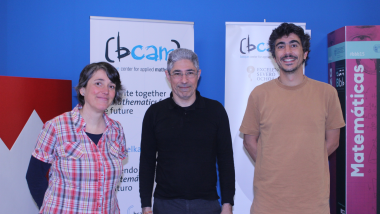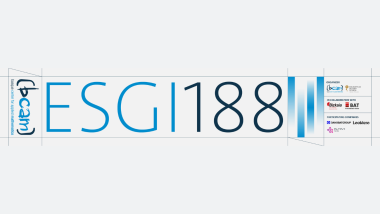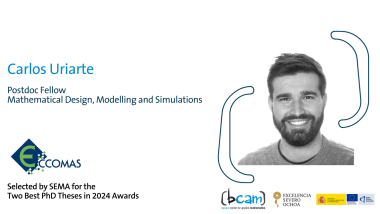The scientists who inspired us (VI): Alan Turing
On June 28th, Spain celebrates the LGTBI+ National Pride Day, a date that is commemorated around the world in remembrance of the Stonewall revolts that took place in 1969 in New York and which are considered the beginning of the modern fight against discrimination on the basis of sexual orientation and gender identity.
In honor of this occasion, at BCAM we have decided to dedicate one of our articles on scientists that inspire us to the mathematician Alan Turing, one of the icons of the LGTBI+ collective in the scientific field. This time it will be Miguel Benitez, Project Manager at the center, who will talk to us about what the figure of Turing means to him.
Much has been written about Alan Turing from the LGTBI+ collective. He is, without a doubt, the most well-known gay icon in the scientific context and, in particular, in the area of mathematics. There were many others before Turing and many also after him, but if anything made Prof. Turing famous it was his great contribution to the end of World War II, which makes him doubly important.
Turing was trained at King's College, Cambridge, where he carried out the mathematical research that would later lead him to design the so-called 'Turing Machine', a device capable of determining mathematical functions. Thanks to the success of this work, he was able to travel to Princeton (USA) to write his doctoral thesis.
During the Second World War, Turing was recruited to work in a group of the British espionage service whose aim was to decipher the functioning of the Enigma machines. These electromechanical encryption devices created in the 1920s by the Germans served to make Nazi communications intelligible.
Turing's work was decisive in deciphering the code of the Enigma machines and in developing a machine that replicated and translated it, the Bombe. Since its launch in 1940, this machine deciphered around 84,000 encrypted German messages per month, proving crucial for Allied merchant and military ships to avoid German submarines in the Mediterranean.
A lot has been written about Alan Turing’s life and achievements. However, I want to focus this post on how I discovered Turing's work and the effect it had on me and my first love.
One day, when I was in college, the professor of Sets and Numbers started talking to us about Cryptography and told us how you could send messages and receive them without being detected. Every week the professor proposed a cryptographic method, from the Scale to the Enigma Machine. The class was fascinating. My first love and I discovered those methods were a way to communicate with each other, without anyone noticing it. It was very fun to get to know him through messages that only he and I knew about and that were very difficult to discover. We fell in love with that game. Nobody knew about it, it was our secret.
At the end of the course, one day, the teacher told us Alan Turing's personal story, almost out of context. He explained to us that, besides his great scientific contribution, Turing's story was known for how horrible the end of his life was. Turing openly declared himself gay in a police investigation, for which he was forced to undergo medical treatment of chemical castration that ruined his health in his final years. He died in 1954 after ingesting an apple contaminated with cyanide. To this day, the circumstances of his death have not been clarified and no one knows for sure whether if it was a suicide, a murder or a mere accident.
The day we heard about his story Turing became a great example for us and we decided to tell the world that we had fallen in love through cryptographic methods. In 2013, Queen Elizabeth II exonerated Alan Turing. That day that man I fell in love with called me and we cried together remembering Turing’s story. The English were 61 years too late. Sources and websites with more information:
- Wikipedia page about Alan Turing
- Alan Turing’s biography at Encyclopedia Britannica
- LGTBIQA+ Science, looking for references for a new society (in Spanish)
Image: Public Domain
Related news
Zentroari buruz
Zentroari buruz
ESGI 188 (European Study Group with Industry) Bilbon izango da 2025eko maiatzaren 26tik 30era
BCAM pertsonak




